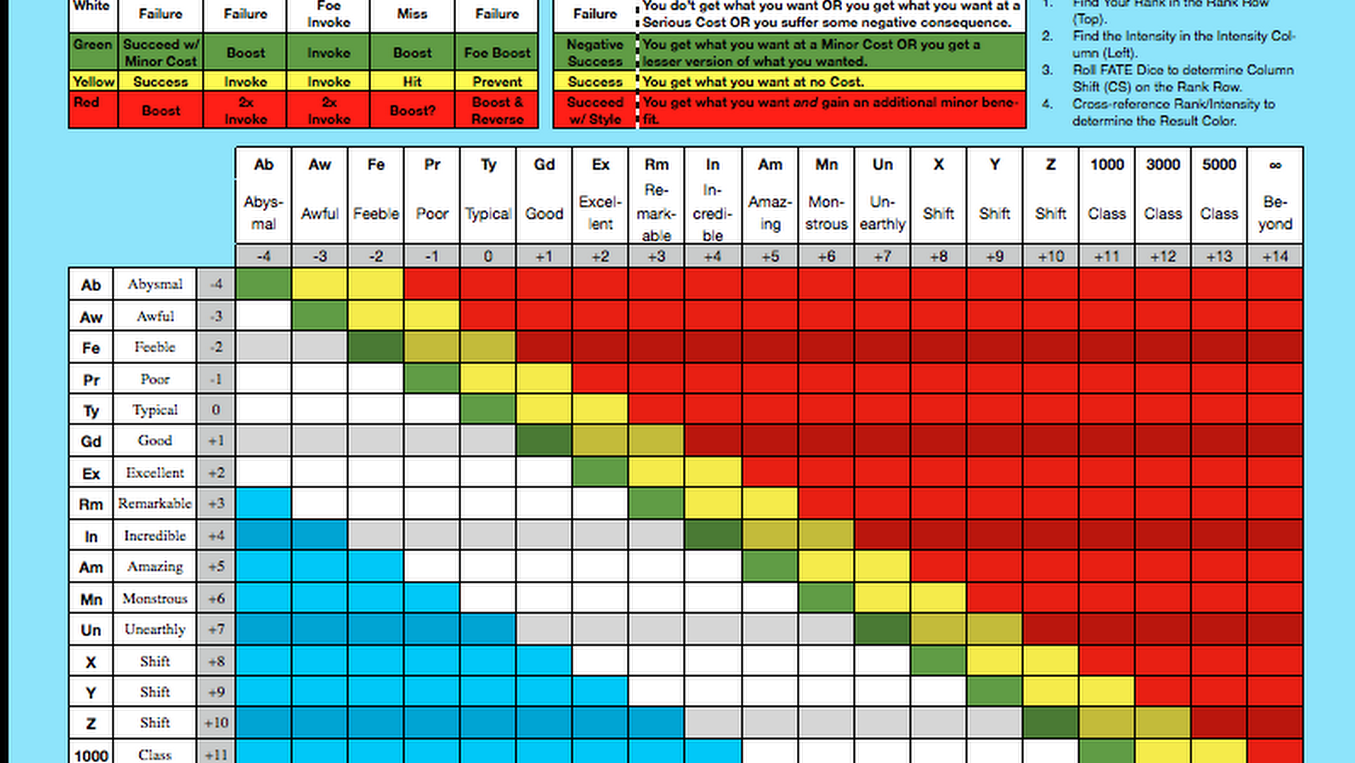What might be like what in this less than ideal game pdf hackery, here is an example:

These 2 examples, not too bad.

Remarkable, Incredible and Amazing nerdiness
What might be like what in this less than ideal game pdf hackery, here is an example:

These 2 examples, not too bad.
https://shutteredroom.blogspot.com/2023/12/slaine-and-ukko-for-basic-games.html
On creating these sort of inspiration-for-genre heroes in D&D games.
In this case, the pair from 2000AD.
https://github.com/modality/abulafia
The old random generators – instructions on how to get this running again.
This would be good to turn a fantasy adventure version of into a megaladon.

A few campaign and statistical notes for the setting here
Just making a list of ones I have liked
https://questionablecontent.net/ – been going for 20 years – many sentient robots
https://www.atomic-robo.com/atomicrobo/v1ch1-page-1 – What if Hellboy was a robot designed by famous inventors?
Spacetrawler – Half a dozen humans shanghaied by aliens to help try and free a race of technogenius inventors with no willpower – silliness ensues – the second one has a BOXING KANGAROO as a main character! This is brilliant!
https://ohumanstar.com/ – Robot inventor gets revived as a digital version
https://www.goblinscomic.org/ – A bunch of goblins discover they can be PCs too, meta-adventuring hilarity and pathos ensues
Freakangels – Mutant postapocalypse meets the Midwick Cuckoos
The Order of the Stick – Dungeon adventuring with very skinny limbs
Steeple – A Satanist and a Vicar switch jobs, in the same town. With fish people and midsomer murders.
Digger – A wombat has fantasy adventures – not read enough to know ore
Stand Still, Say Silent – A Fennoscandian postapocalypse https://sssscomic.com/comic.php?page=3
The Subsitutes – https://www.thesubstitutescomic.com/comic/prologue-page-12
Spindrift – https://spindrift-comic.com/comic/01/16
Battleplug – Barbarian on dog
Insufferable – Batman style manipulator and narcissistic sidekick
Athena Voltaire
Lady Sabre & the Pirates of the Ineffable Aether
In January I adapted the Advanced Dungeons and Dragons 1st Edition Random Dungeon Generator to code, which is available here:-
https://github.com/bluetyson/ADnD1e-Random-Dungeon-Generator
This launches a container that you can run the code in via the simple instructions and make whatever sorts of dungeons you like.
https://mybinder.org/v2/gh/bluetyson/ADnD1e-Random-Dungeon-Generator/HEAD
Using this random dungeon generator I have made a million dungeons – all with 10 as the Periodic Check number.
So they will be quite small in general.
Here you can randomly choose one of those:-
https://cosmicheroes.space/cgi-bin/dungeoncount5.pl
and here you can pick your own from 0 to 999999

Llama 2 version Title: The Eruptive Quest for the Sky Castle
Adventure Summary:
A powerful sorcerer has conjured a smoke castle in the sky, which only appears during volcanic eruptions. The castle is guarded by magma golems, fierce creatures made from molten rock. Brave adventurers must navigate through treacherous terrain, overcome obstacles, and defeat the golems to reach the castle and claim their reward.
Introduction:
The land is plagued by frequent volcanic eruptions, causing widespread destruction and chaos. Amidst this turmoil, a mysterious sorcerer has appeared, seeking brave adventurers to undertake a perilous quest. The sorcerer has conjured a smoke castle in the sky, rumored to contain valuable treasures and ancient knowledge. However, the castle only materializes during volcanic eruptions, and its entrance is guarded by formidable magma golems.
Act I – Journey Through the Volcanic Landscape
1. Adventurers begin their journey in a nearby village, where they gather information about the sorcerer’s castle and the surrounding terrain.
2. They set out towards the volcano, navigating through ash-covered plains, lava flows, and steaming fissures. Along the way, they encounter hazards such as falling rocks, pyroclastic clouds, and poisonous gases.
3. As they approach the volcano, the ground shakes violently, and the air fills with the sound of explosions and rumbling. The party must find shelter before the eruption intensifies.
4. Safe within a temporary refuge, the adventurers witness the spectacular display of lava bombs, lightning storms, and pyroclastic surges. When the intensity of the eruption subsides, they continue their ascent up the mountain.
5. Nearing the summit, the party encounters the first wave of magma golems. These fearsome creatures are constructed from molten rock and can hurl fireballs at their enemies. The adventurers must use strategy and teamwork to defeat them.
6. After overcoming the initial wave of golems, the party reaches the base of the smoke castle. Its walls are shrouded in swirling vapors, making it difficult to discern any entry points.
Act II – The Smoke Castle
1. The adventurers search for an opening into the castle, avoiding illusory walls and hidden traps set by the cunning sorcerer.
2. Once inside, they face a maze of twisting corridors filled with noxious fumes, blinding fog, and eerie whispers. The walls are adorned with cryptic murals depicting the history of the castle and its former inhabitants.
3. In the heart of the castle, the party discovers a grand chamber containing a series of pressure plates. Each plate corresponds to a different element (earth, air, water, fire) and must be activated simultaneously to unlock the next area. The challenge lies in coordinating the activation of all four plates without triggering the deadly trap linked to each one.
4. Beyond the pressure plate room, the adventurers encounter more magma golems, this time accompanied by their master, a powerful magma elemental. The elemental can manipulate the lava flowing through the castle, creating pools of molten rock and waves of flames that threaten to engulf the party.
5. Upon defeating the elemental, the party claims their prize: a chest containing enchanted items, rare minerals, and ancient scrolls detailing the secrets of magic and alchemy.
Conclusion:
As the eruption subsides, the adventurers escape the crumbling smoke castle, carrying their spoils back down the mountain. News of their success spreads throughout the region, attracting new challenges and opportunities for these seasoned heroes. Though the smoke castle may vanish until the next eruption, its legacy endures, inspiring future generations to explore the mysteries of the arcane and the power of the elements.